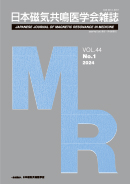最新号
選択された号の論文の5件中1~5を表示しています
- |<
- <
- 1
- >
- >|
資料
-
原稿種別: 資料
2024 年 44 巻 1 号 p. 1-6
発行日: 2024/02/15
公開日: 2024/03/08
[早期公開] 公開日: 2023/12/12PDF形式でダウンロード (2225K)
総説
-
原稿種別: 総説
2024 年 44 巻 1 号 p. 7-16
発行日: 2024/02/15
公開日: 2024/03/08
[早期公開] 公開日: 2023/11/15PDF形式でダウンロード (1584K) -
原稿種別: 総説
2024 年 44 巻 1 号 p. 17-22
発行日: 2024/02/15
公開日: 2024/03/08
[早期公開] 公開日: 2023/12/15PDF形式でダウンロード (1185K)
資料
-
原稿種別: 資料
2024 年 44 巻 1 号 p. 23-25
発行日: 2024/02/15
公開日: 2024/03/08
[早期公開] 公開日: 2023/11/16PDF形式でダウンロード (2536K) -
原稿種別: 資料
2024 年 44 巻 1 号 p. 26-41
発行日: 2024/02/15
公開日: 2024/03/08
[早期公開] 公開日: 2024/02/06PDF形式でダウンロード (4127K)
- |<
- <
- 1
- >
- >|
